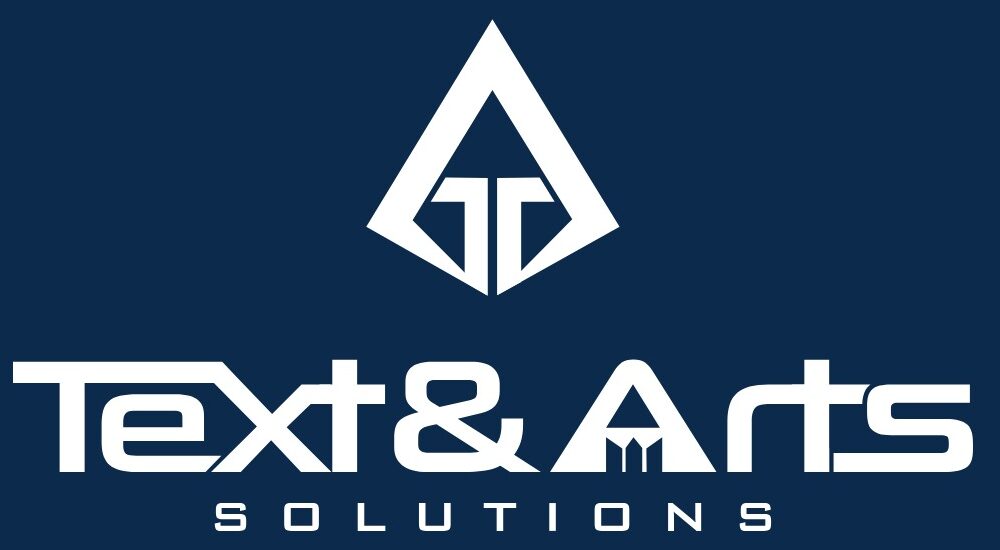Introduction
If social media is the party, email is the personal invitation. It lands in a private space, uses your name, and—when written well—moves you to click. That’s the promise of email marketing copywriting in 2025: clear, reader-first messages that respect privacy, cut through crowded inboxes, and earn action. The tools have evolved (AI drafting, advanced segmentation, stricter authentication), but the winning formula is the same—right message, right person, right moment. In this guide, we’ll show you how to craft emails that get opened, read, and clicked, with examples and frameworks you can use today.
What Is Email Marketing Copywriting in 2025?
Email marketing copywriting is the practice of planning, writing, and optimizing email text—subject lines, preheaders, body, and CTAs—to drive measurable outcomes (clicks, replies, purchases, signups). In 2025, three forces shape the craft:
- Privacy-first analytics. Open rates are increasingly noisy, so we optimize for clicks, conversions, and replies.
- Authentication & trust. DMARC, SPF, DKIM, and BIMI help deliverability—but copy must signal legitimacy (clear from-name, purpose, and opt-out).
- AI assistance. Drafts get faster; human editors ensure accuracy, empathy, and brand voice.
Working definition: Words that guide a subscriber from curiosity to clarity to click—ethically and efficiently.
Subject Lines & Preheaders That Win the Click
The Double-Headline Principle for Email Marketing Copywriting
Treat subject + preheader as a two-line ad. The subject creates tension; the preheader resolves it or adds a second reason to open.
- Subject: “Your month got 18 hours shorter.”
Preheader: “3 email fixes that reclaim your calendar.” - Subject: “Stop chasing abandoned carts.”
Preheader: “Use this one-line CTA (template inside).” - Subject: “A designer’s guide to dark mode.”
Preheader: “Avoid invisible buttons + low-contrast text.”
Best practices
- Put the benefit first; avoid vague teasers.
- Front-load keywords subscribers recognize (product, plan, webinar title).
- Use numbers, brackets, or time cues responsibly: “[New Template],” “Today,” “72-hour offer.”
- Keep it mobile-friendly (assume 30–45 visible characters).
Avoid
- ALL CAPS, too many emojis, and clickbait.
- Generic “Newsletter #27” or “Update”—no context, no click.
Body Copy Frameworks that Drive Action
Three Proven Structures for Email Marketing Copywriting
1) PAS (Problem–Agitate–Solve)
Use when readers feel a pain.
- Problem: “Your team spends hours reformatting reports.”
- Agitate: “The real cost is momentum—projects stall.”
- Solve: “Try our export pack; 1 click, consistent layouts.”
2) BAB (Before–After–Bridge)
Use for transformation stories.
- Before: “Scattered sheets, version chaos.”
- After: “One dashboard, real-time numbers.”
- Bridge: “Here’s how our workflow makes it happen.”
3) 4P (Promise–Picture–Proof–Push)
Use for offers or launches.
- Promise: “Cut your editing time by 40%.”
- Picture: “Imagine shipping daily without late nights.”
- Proof: “1,200+ users, 4.8/5 rating.”
- Push: “Start a 7-day trial—no card needed.”
Tip: Pick one framework per email. Mix only if the message is long-form (e.g., monthly letter).
Microcopy That Multiplies Clicks
- Lead with outcomes, not features. “Export to PDF” → “Share print-ready reports in seconds.”
- Write skimmable lines. Average one idea per sentence; 10–14 words each.
- Prefer verbs. start, fix, compare, download, build, save.
- Name the audience. “For HR leads on tight deadlines.”
- Handle objections in-line. “Try it free—no credit card.”
CTA examples
- Primary: “Get the template” (not “Click here”)
- Secondary: “See how it works” (for readers who need proof)
- Low-commitment: “Reply ‘yes’ for the step-by-step” (great for service businesses)
Design for Readability, Accessibility & Dark Mode
Layout Rules That Help Your Copy Work Harder
- Single clear goal. One email, one primary CTA.
- Hierarchy. Big headline, short dek, bullets, button.
- Whitespace. Generous margins; avoid wall-of-text.
- Mobile first. 14–16px body, 44px+ tappable buttons.
- Plain-text parity. Always include a readable plain-text version.
Accessibility & Dark-Mode Essentials
- Contrast. Aim for accessible color contrast (avoid light gray on dark).
- Alt text. Treat alt as microcopy (“See pricing tiers”).
- Button clarity. Don’t rely only on color; add borders/underlines in dark mode.
- Image-off resilience. Write so the email still makes sense without images.
Bonus: A/B test button microcopy (“Start my free trial” vs “Start free”) and button placement (top vs bottom). Small differences, big results.
Personalization & Segmentation that Feel Human
Beyond First-Name Personalization in Email Marketing Copywriting
The goal is relevance, not flattery. Personalize using behavior and stage, not just name.
- Behavioral: pages viewed, features used, content downloaded
- Stage: new subscriber, evaluator, active customer, churn risk
- Source: where they joined (webinar, blog, pricing page)
- Self-declared (zero-party) data: role, goals, industry size
Examples
- “Because you compared Plans A and B, here’s when each wins.”
- “You saved a template—want 3 more for your niche?”
- “Missed the workshop? Get the 6-slide recap.”
Lifecycle Flows That Print Clicks
- Welcome series (2–4 emails): expectation-setting + one quick win + soft CTA.
- Onboarding (product/service): “Do this first,” “Invite a teammate,” “Get your first result.”
- Nurture: problem-solving tips + case snippets + ask a question.
- Re-engagement: “Still relevant?” + preference center + “What should we send?”
- Win-back: proof of value + incentive + clear “no hard feelings” exit.
Write each flow to one audience state. The tighter the segment, the simpler the copy.
Deliverability, Legitimacy & Compliance
Copy Signals that Build Trust
- From-name readers recognize (“Riya at Brand,” not random noreply).
- Reason for email in line one: “You signed up after our webinar.”
- Unsubscribe that’s easy to find (and a preference link).
- Physical address and reply-to monitored by humans.
- No misleading meta (subject lines must match content).
The Technical Basics (Writer’s Edition)
You don’t have to configure records, but know the vocabulary:
- SPF/DKIM/DMARC alignment → better inbox placement.
- BIMI → brand logo in supported inboxes (requires DMARC).
- List hygiene → remove hard bounces/inactives; don’t beg ISPs for spam folder time.
- Rate & reputation → avoid big spikes; send consistently.
Copy helps here: fewer spammy tropes, clearer intent, cleaner engagement.
Testing & Measurement in a Privacy-First World
What to Test in Email Marketing Copywriting
- Subject + preheader pairs (the two-line ad)
- Lead paragraph (outcome vs story)
- CTA microcopy & placement
- Length (100–150 words vs 250–350 words)
- Voice (formal vs conversational)
- Offer framing (discount vs bonus vs guarantee)
What to Measure (Beyond Opens)
- Click-through rate (CTR). Are we earning taps?
- Click-to-open rate (CTOR). Did the body deliver on the subject promise?
- Conversion (trial start, reply, booking, purchase).
- List health (unsubscribes, spam complaints, inactivity).
- Revenue per recipient (for ecommerce).
- Reply rate (for service businesses & relationship-driven brands).
Adopt a testing cadence: one variable per send, document hypotheses, roll forward winners.
AI in the Inbox—Faster Drafts, Human Judgment
Safe Ways to Use AI for Email Marketing Copywriting
- Idea generation. Subject line variants, theme angles, CTA options.
- Summaries. Turn a long blog into a 150-word email.
- Localization drafts. Then human-edit for nuance and tone.
- Personalization snippets. Dynamic lines based on user attributes.
Where Humans Must Lead
- Positioning & claims. Accuracy and ethics are non-negotiable.
- Brand voice. Consistency builds trust.
- Edge cases. Sensitive topics, regulated industries, crisis comms.
- Final edit. Trim fluff, fix logic, add empathy.
A practical rule: let AI produce options; let humans choose and sharpen.
Three Mini Case Studies (Composite)
SaaS Trial Onboarding (B2B)
Challenge: New-trial users weren’t activating key features.
Copy shift: Replaced “tour the product” with “Get your first result today,” then three steps and a 1-click import.
Outcome: CTR +29%, activation +18% within two weeks.
Lesson: Sell the first win, not the feature list.
DTC Re-engagement (Ecommerce)
Challenge: 90-day inactive segment.
Copy shift: “Still interested?” + “Tell us your style” preference quiz + 10% thank-you.
Outcome: Clicks from inactive users tripled; small, healthy reactivated cohort.
Lesson: Use zero-party data to rebuild relevance.
Service Firm Newsletter (Consulting)
Challenge: High opens, low clicks.
Copy shift: Clear “one takeaway” headline + story → template → case snippet → “Reply ‘YES’ for the checklist.”
Outcome: Clicks +42%, replies increased noticeably; new discovery calls.
Lesson: Offer two doors: a link for learners and a reply for talkers.
(These are illustrative patterns we frequently see when teams move to reader-first copy.)
Templates You Can Steal Today
Short Announcement (150–200 words)
- Subject: “[New] 7-minute audit template”
- Preheader: “See the 10 common mistakes.”
- Body:
- Hook: “Ship audits in minutes, not hours.”
- 3 bullets: benefit, who it’s for, what’s inside.
- Button: “Get the template”
- Footer: “Prefer a walkthrough? Reply ‘yes’.”
Event Invite (200–250 words)
- Subject: “Live teardown: emails that earned a 2× CTR”
- Preheader: “Free seat; replay included.”
- Body:
- Promise + date + who it’s for
- 3 takeaways in bullets
- Button: “Save my seat”
- P.S.: Time-zone & calendar link
Re-engagement (120–180 words)
- Subject: “Still want tips from us?”
- Preheader: “Tell us what to send (1 click).”
- Body:
- Acknowledge silence; offer preference choices
- Button: “Update preferences”
- Alt door: “Unsubscribe—no hard feelings”
Work with Text & Arts Solutions
Stop guessing and start shipping emails people want to read. At Text & Arts Solutions, our team blends strategy, design, and email marketing copywriting to lift clicks and conversions across your lifecycle.
What we deliver
- Audit & strategy: segmentation map, flow gaps, offer angles
- Copy & creative: subject lines, preheaders, body, CTAs, alt text
- Flows: welcome, onboarding, nurture, re-engagement, win-back, transactional
- Localization: English, Hindi, Marathi with cultural nuance
- Optimization: testing plan, KPI dashboard, monthly iterations
- Compliance support: clear consent language, preference center, accessible templates
Ready to grow your inbox ROI?
Share your goals and a sample campaign. We’ll respond with a quick diagnostic and a mini subject-line bank tailored to your niche.
Conclusion
The inbox is still prime real estate—provided you earn attention and respect it. In 2025, email marketing copywriting is about clarity, relevance, and trust. Pair crisp subject lines with helpful preheaders. Structure body copy around outcomes and skimmable beats. Personalize by behavior and stage, not just names. Design for accessibility and dark mode. Test one variable at a time, measure clicks and conversions, and let AI assist while humans lead. Do these consistently and your emails will get opened, read—and most importantly—clicked. And when you want an experienced partner to make that consistency effortless, Text & Arts Solutions is here to help.


